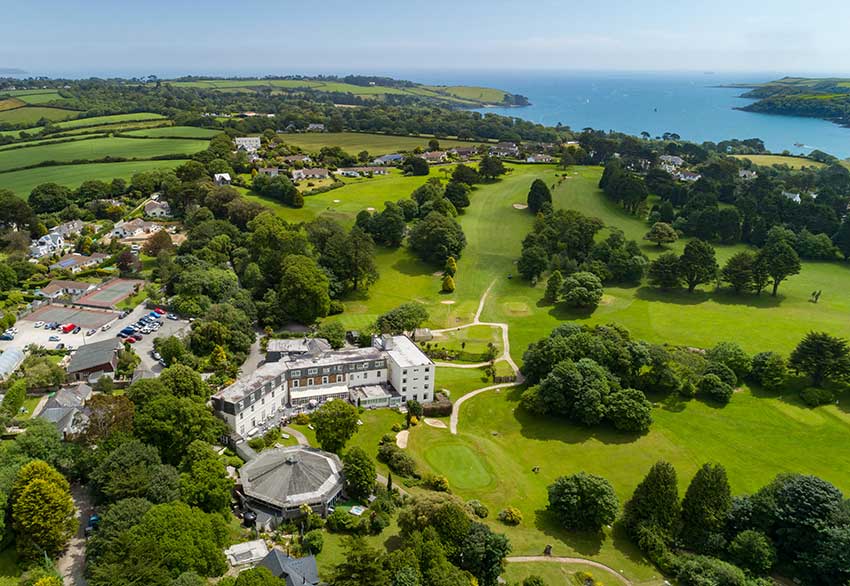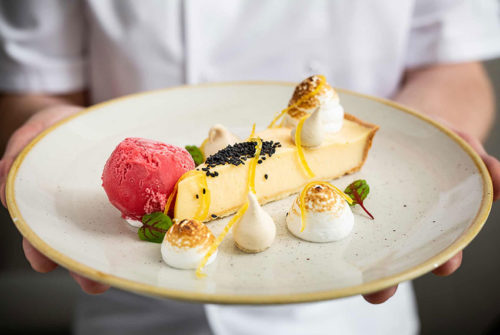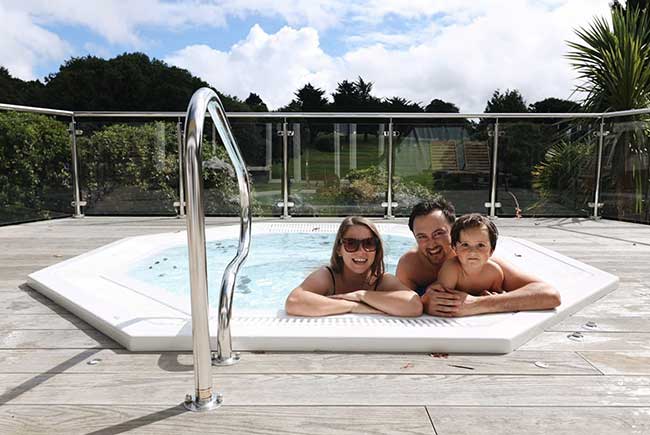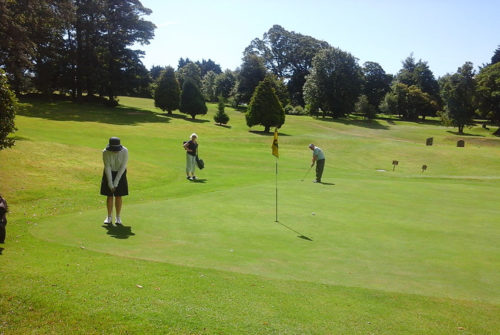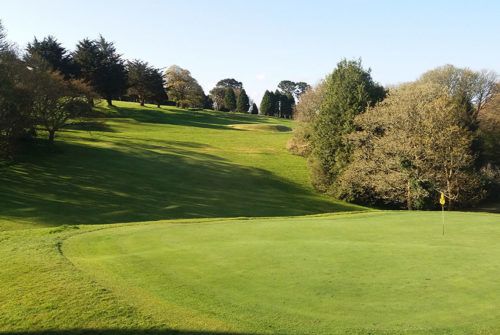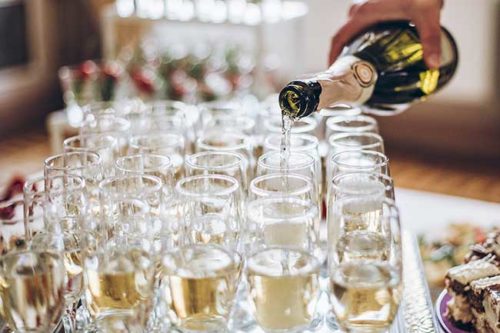News from Budock Vean
Finding Inspiration – Tennyson in Falmouth
The many faces of Cornwall, its atmospheric landscapes, distinctive culture and vibrant folklore, have all helped to inspire the many authors who have experienced them. From the Gothic novels of Daphne du Maurier to W. J. Burley’s detective series, Wycliffe, the Cornish landscape has in many ways been more than just a backdrop, it has become an important character in itself; its beauty and its mercurial moods a memorable protagonist.
Artists come to Cornwall in search of beauty and light, writers come in search of something a little more indefinable, more personal perhaps.
The English poet, Alfred, Lord Tennyson, was looking for Camelot, Avalon and Lyonnesse. He visited Cornwall on at least two occasions, in 1848 and again in 1860, and there can be little doubt that his most famous work “Idylls of the King” was in part inspired by the landscape that he saw on those visits.
During that first trip in 1848 Tennyson, who was already becoming something of a Victorian literary superstar, stayed in the Falcon Hotel in Bude and visited the eccentric vicar, Rev. Hawker, at Morwenstow. The pair apparently rowed out together in a gig and Hawker regaled the poet with tales of shipwrecks. But Tennyson, along with visiting the tourist destinations of Kynance Cove, Polperro and Lands End, also spent some time in search of King Arthur. He visited Tintagel, the mythological king’s supposed birthplace, and went to Slaughterbridge, the site of Arthur’s last battle and where an inscribed stone was once thought to mark his grave.
He is said to have been “enchanted with the beauties and antiquities” of the area and made notes of what he saw and felt, returned to them later when he began writing Idylls, the twelve narrative poems he published between 1859 and 1885 retelling the legend of King Arthur.
“After the sunset, down the coast, he heard
Strange music, and he paused and turning – there,
All down the lonely coast of Lyonnesse,
Each with a beacon-star upon his head,
And with a wild sea-light about his feet,
He saw them, headland after headland flame
Far on into the rich heart of the west.”
Tennyson returned to Cornwall in September 1860 with fellow poet Francis Turner Palgrave, again visiting Tintagel and Bude, along with Boscastle and Penzance. On the final leg of the trip they spent some time in Falmouth and, to everyone’s delight, popped into the Royal Cornwall Polytechnic Society in the town. The Poly was holding its annual exhibition at the time, an event that showcased the best that Cornwall, and beyond, had to offer in the fields of art, science and engineering. The Falmouth Packet reported that Sydney Hodges had given a lecture describing the various modern inventions and specimens of modern manufacture along with the various works of art displayed around the room. One of these paintings apparently depicted Queen Guinevere and may have been what had attracted Tennyson to the Poly that day. The paper ended the article with the following:
“In referring to the illustrious visitors who have been at the exhibition he [Hodges] mentioned the Poet Laureate, Alfred Tennyson, and concluded by saying of all the great names that have from time to time favoured us with their presence, scarcely one is more widely known to fame, nor more deservedly so than Alfred Tennyson.”
His presence in the town seems to have caused something of a stir, though not everything worked out quite as planned. The Cornish Telegraph noted that as soon as it was known that he was staying at Vivian’s Royal Hotel there was “a gathering of notables.” And that “his agreeable manners in conversation with some of the company made a favourable impression but oh! the horror when the hour of rest arrived and no bed could be found for the poet and he was obligated to seek repose in the apartment of a neighbouring fish shop!”
Unfortunately, and rather embarrassingly, the Royal Hotel, which stood on the corner of Market Street and Fish Strand Hill, discovered it was full and according to local legend the Poet Laureate ended up lodging above the fishmonger’s shop.
During his few days in Falmouth Tennyson met with the diarist, Caroline Fox, at her home. The Foxes of Falmouth were one of the town’s most well connected and influential families and as well as their involvement in the mining and manufacturing industries they had also founded the Royal Cornwall Polytechnic Society. Their homes, which included Glendurgan, Trebah, Penjerrick, Rosehill, Tredrea, Wodehouse Place and Grove Hill, regularly played host to leading characters from the realms of literature, art, science and maritime exploration, so it seems only natural that Tennyson should visit this cultural haven.
Caroline knew Tennyson’s work well, there are references in her diary to his writing as early as 1841. She and her siblings, Robert Barclay and Anna Maria, would read his poems aloud to each other but meeting him in person appears to have left a particularly strong impression on Caroline.
She wrote: “Tennyson is a grand specimen of a man, with a magnificent head set on his shoulders like a capital of a mighty pillar. His hair is long and wavy, and covers a massive head. He wears a beard and moustache, which one begrudges as hiding so much of that firm, powerful but finely chiselled mouth. His eyes are large and grey and open wide when a subject interests him; they are well shaded by the noble brow, with its strong lines of thought and suffering. I quite understand Samuel Laurence calling it the best balance of head he ever saw. He is very brown after all the pedestrianizing along our south coast.”
She notes that they spoke for hours, about the painting of Queen Guinevere, his work, particularly his passion for the Arthurian legends and his ‘Idylls’, his impressions of Cornwall and the Cornish, (“very superior generally”), and of his previous visit to Bude during which, desperate to see the sea after dark, he had fallen badly and was laid up for six weeks as a consequence.
Tennyson was also particularly taken by the Foxes’ family gardens at Rosehill, now a public park, and Grove Hill. He is said to have remarked on the various unusual and rare plants that they had introduced, creating a tropical paradise on the coast of Cornwall. But for a smitten Caroline the poet’s visit was all too brief, she recorded him departing “with a farewell grasp of the great brown hand”.
The next day Tennyson and Palgrave took a river-steamer to Truro and made their way home. Idylls of the King became enormously popular and sparked something of a tourist boom for Cornwall, particularly Tintagel, as Tennyson’s readers ventured west in search of their own glimpse of Lyonnesse.

